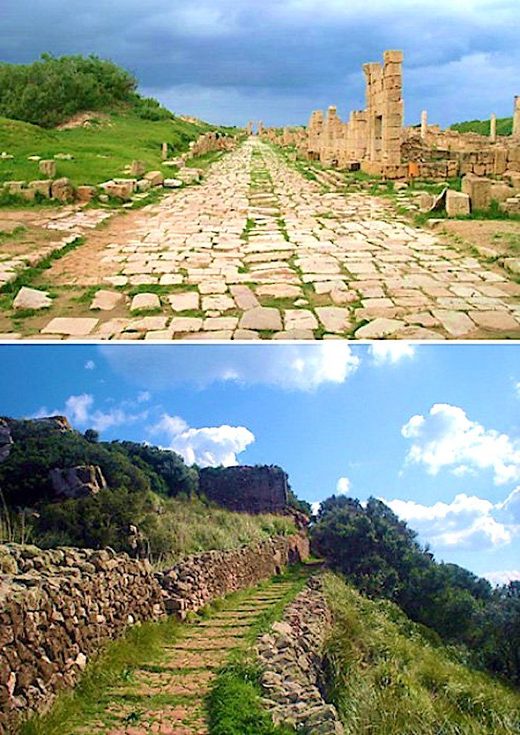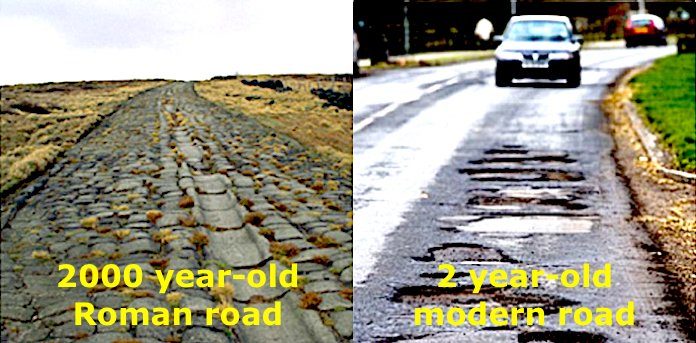Roads of All Kinds
It has been calculated that the network of Roman roads covered a distance of over 400,000 km (248,548.47 miles), with more than 120,000 km (74,564.54 miles) of this being of the type known as 'public roads'. Spreading across the Romans' vast empire from Great Britain in the north to Morocco in the south, and from Portugal in the west to Iraq in the East, they allowed people and goods to travel quickly from one part of the empire to another.

Constructing Roads to Last
There was no 'one-size-fits-all' Roman technique for building roads. Their construction varied depending on the terrain and the local building materials that were available. For example, different solutions were required to build roads over marshy areas and steep ground. Nevertheless, there are certain standard rules that were followed.
Roman roads consisted of three layers - a foundation layer on the bottom, a middle layer, and a surface layer on the top. The foundation layer often consisted of stones or earth. Other materials used to form this layer included: rough gravel, crushed bricks, clay material, and even piles of wood when roads were being built over swampy areas. The following layer would be composed of softer materials such as sand or fine gravel. This layer may have been formed by several successive layers. Finally, the surface was made using gravel, which was occasionally mixed with lime. For more prominent areas, such as those close to cities, roads were made more impressive by having the surface layer built using blocks of stone (which depended on the local material available, and may have consisted of volcanic tuff, limestone, basalt, etc.) or cobbles. The center of the road sloped to the sides to allow water to drain off the surface into drainage ditches. These ditches also served to define the road in areas where enemies could use the surrounding terrain for ambushes.
To read the rest of this article, go here.




Comment: What you 'put into it,' is what you get out of it.